Do you want to be engaged in a sport where only a handful of people can actually appreciate what you’re doing? Do you want to join a sport where you literally risk life and limb to achieve a goal? Do you want to join a sport where you don’t compete with anybody but yourself? If you do, Sheila and I then welcome you to the world of rock climbing.
Rock climbing is an extreme sport like skydiving, base jumping, or snowboarding in which the element of danger haunts you to excitement. It’s a sport where you either “get it” or you don’t. Specifically, you either want to climb a towering cliff or you don’t.
The idea of rock climbing is pretty straightforward. You try to climb from the ground to the top of a cliff, but that’s just the first thing. The second thing comes if you slip, lose your balance, and fall along the way. Because of the potential injury (or death) that may happen during a fall, a good deal of highly specialized equipment is required to catch you and postpone your meeting with your creator.
Rock climbing in the Philippines, admittedly, is almost an unknown sport. Try searching the web for rock climbing specifically in the Philippines, and you’d come up with just a few relevant results. There are no route guidebooks, comprehensive accounts, and how-tos. Food and accommodations hover on rudimentary.
However, what it does offer is exceptional climbing in a virgin paradise, and in the country, the best place to scramble up cliffs is in Cantabaco, a quaint countryside town in the city of Toledo in the island of Cebu. Here, you can find the best, whitest, cleanest, unspoiled limestone cliffs in Cebu. The cliff is exquisitely bolted for exceptional sport climbing. If you seek to challenge yourself, then rock climbing in Cantabaco is definitely for you.
To get to this adrenalin pumping place, you need to ride a Toledo-bound bus at the Cebu South Bus Terminal. Ask the driver to drop you off at the Lutopan junction. From there, you ride a habal-habal (motorcycle for hire) to Cantabaco. A habal-habal ride is almost always mandatory in any adventure. If you go to Cantabaco via bus, you are going to have to ride these skinny motorcycles unless you want to walk for half an hour under the heat of the sun.
Tell the driver to drop you off at the Silangan Chapel. From here, the magnificent limestone cliff of Cantabaco is visible from the road.
A peaceful, quiet community. You may find it strange that there are only a handful of local climbers at the Philippines’ best rock climbing site.
Raymund Daculan, Enie Yonson and Willard Elimino are the best known guides in Cantabaco. Raymund’s house is just a 1-minute walk from the Silangan chapel while Enie’s is a bit farther away. Willard’s is about 6 kilometers away from Cantabaco. The photo below shows Raymund’s awesome crib.
The apartment with the red roof is actually a bed-and-breakfast for visiting climbers. Lots of foreigners and local climbers rent rooms there for several days. For a small fee, you can even ask the household to cook your meals for you. The bed-and-breakfast features amenities that are fit for adventurers who are trying not to blow a hole in their wallets. Such amenities include the basics: a toilet, a bathroom, a washing area, and an outside dining area.
Inside Raymund’s cool crib. It is chock-full of climbing equipment and a cool, cool motorcycle.
If this is your first time to experience rock climbing, you probably don’t have climbing equipment. Worry not, fellow adventurer, for our guides have their own equipment that you can rent for a minimal fee.
All set? Got your harness and rock climbing shoes? What about ropes, quickdraws, and belay devices? Great! Let’s head to the crag. It’s just a 15-minute walk from the chapel.
On the way, you may want to buy your lunch so you won’t have to exit the crag and go back to the street again to buy food during noontime. I tell you, you wouldn’t want to go down while you are in the heat of climbing; the adrenaline rush is just too strong that it overshadows your pangs of hunger. There are lots of carenderias (streetside eateries) around where you can take your pick.
A few minutes from the road, you need to cross this rickety bamboo bridge that runs over a stream. Don’t worry, it is strong although you might want to have a bit of malicious fun by shaking the bridge with your feet while someone crosses it. The bridge creaks and groans as you cross it, enhancing the rural, provincial feel. This bridge is actually a landmark in Cebu’s rock climbing community.
Follow a short trail through the jungle . . .
. . . then to the massive, magnificent, unspoiled limestone crag of Cantabaco.
Unless you are taking an alternative trail, the main trail takes you to Areas 1 and 2 where you can start climbing some routes. However, guides usually go directly to Area 3 where there is a lot of shade. To get to Area 3, you need to scramble up these huge, mossy, slippery boulders.
Welcome to Area 3 of Cantabaco. It offers a lot of shade while you come face-to-face with a fine limestone cliff.
On a good day, Area 3 may be filled with people. Don’t worry. There are 60 routes of varying climbing grades (level of difficulty) along the length of the crag.
Before we do anything, Sweetie and I usually head off to a nice nook in Area 3 where we can set up our hammock so that we can simply rest and snooze off if we run out of adrenaline, which is actually unlikely.
While you psyche up yourself or do some warm-ups, the guides prepare themselves to set up a route for you to climb.
First, we set up a top-rope system for you. To do that, we do a climbing technique called lead climbing. Lead climbing is ascending a route that involves a climber attaching himself or herself to a length of dynamic rope. As the climber ascends a route, he or she places protection equipment (pro, in short. In sport climbing, we use quickdraws as pro) to bolted hangers on the face of the route and clipping the rope to the pro. If the climber falls, the pro prevents him from plunging to his death.
Here, I’m lead climbing a route called Bohemian, my favorite warm-up route. See that orange thingy where the rope passed through and the similar blue object at the right side of my head? Those are quickdraws, or pro, to save me from a fall.
A climber needs another person below to hold the rope if he or she falls. That person also feeds rope as the lead climber ascends. This person is called a belayer, and your belayer literally has your life in his or her hands. It is important that your belayer knows how to do his job properly. It’s also important for the belayer to be calm and composed. Sweetie is my climbing partner and trusted belayer. The bond between Sweetie and me definitely becomes stronger as we entrust each other’s lives. Rock climbing allows us to experience that awesome responsibility.
That’s Sheila and some of our friends, belaying a few climbers in Area 2.
As the climber reaches the top of the route, he or she sets up an anchor so that the belayer can lower the climber down. Once the climber is down, you can now climb the route with the rope set up on an anchor high above the route. This type of climbing is called top roping. It’s a style of climbing in which a rope runs from a belayer at the foot of the route to an anchor system at the top of the route. The rope then goes back to the climber, tied through a harness that is worn by the climber.
Here, Sweetie is climbing on top rope while I belay her.
Sweetie high up on a route called Ninja Cools.
After completing a route, she comes back down and disengages himself. It’s your turn!
To give you an idea of the scale of the crag, check the photo below, and compare the size of the people to the rock. That is just the bottom of the cliff, not even 1/4th of the way!
Sir Tiki is almost at the top of the route.
Once you reach the top, you kiss the anchor (this is customary for first ascents) and look down. Yes, at a hundred feet, the view below is pretty scary! But the feeling of accomplishment is beyond words.
Once everyone has climbed the route, it’s time to clean the route, or retrieve all the quickdraws and the anchor. You don’t want to leave those expensive pieces of equipment, do you? Sweetie usually does the route cleaning. She climbs up the route and unclips all the quickdraws.
Nearing the top of the route . . .
. . . and finally reaching the anchor.
Sweetie prepares to anchor herself in order to set up a rappel anchor. Rappeling is one of the two ways that the retriever uses to go down. Retrieval/cleaning a route is the most crucial part of the climbing process. A mistake in the retrieval/cleaning process can actually injure or kill the climber.
Sweetie at work a hundred feet up!
Once she’s done, she can then rappel down.
On the ground at last! Nice work, Sweetie!
Sometimes, you might want to take a break or climb other routes. You’re free to do that. While you do, Sweetie and I will have our moments.
Or, if you’re hungry, you might want to set up lunch . . . oppa climber’s style!
Of course, you wouldn’t be satisfied with climbing just one route, so we pack up and move to another route. We then repeat the process until you have your fill of climbs.
Age doesn’t matter when it comes to climbing. This Japanese guy is 66 years old and hobbles a bit when he walks. But let him climb, and you’ll feel your eyes widen and your jaws drop to the ground. He is incredibly strong and has great techniques.
Different races, different genders, different professions . . . one goal: to reach the anchor.
Aside from the handful of rock climbers in the Philippines, Cantabaco, as a rock climbing destination, is not well-known in the Philippine sport tourism sector. However, the place is quite popular in foreign lands. In fact, rock climbers all over the world make it a point to stop by Cantabaco to have a taste of Philippine rock climbing. So, don’t be surprised if you see a lot of foreigners here.
You might think that Area 3’s routes are a bit easy for you. Very well, let’s go up. This is Area 4, a climbing area that follows a steep trail. Most of the routes here are 5.11 and 5.12 in climbing grade, or expert level. To compare, most of the routes in Areas 1, 2, and 3 are in 5.8 to 5.10, or beginner to intermediate level.
Still not challenged? Well, let’s move to Area 5 where the rocks are so smooth, the holds are so small, and the moves are so sequential that you’ll wonder if the routes here could be climbed at all. Area 5 has routes that range between 5.11 to 5.14s. These are the best, hardest, truly world-class routes that Cantabaco can offer.
One of our female climbers, Blanche, negotiates a roof on a difficult route called Blackfoot.
A massive roof and overhang in Area 5. Yes, they’re climbable.
Macho papas at Area 5.
At the end of the day, you’ll be so pumped up that you won’t be able to lift anything heavier than your cell phone. It’s time to pack up and go home.
Sweaty but happy!
After taking a shower at Raymund’s place or at Ma’am Glenda’s bed-and-breakfast, we are refreshed and resting for a little while before going home.
Or perhaps goof around with fellow climbers.
See you next weekend, Cantabaco.
Update 3/3/2016: Climbers are not allowed to use the trail that leads to Areas 1 and 2 anymore because the plot in front of the crag is now privatized. Climbers will need to turn right just before the small house, and follow a steep ascending trail to Area 5. From Area 5, you can go down to the lower areas.
There’s a concrete house beside the said trail where you log in and pay a fee of P5.
Suggested Itinerary
6:00 AM – assembly time at South Bus Terminal
6:30 AM – ETD Cebu, ride a Toledo-bound bus to Lutopan
8:00 AM – arrival at Lutopan Crossing (locally known as Landing), ride habal-habal to Silangan Chapel, Cantabaco
8:10 AM – ETA Silangan chapel, meet up with guide, briefing
8:45 AM – Trek to crag, buy packed lunch
9:00 AM – start of rock climbing
12:00 PM – lunch
1:00 PM – rock climbing
4:00 PM – wrap up, packing up
4:15 PM – head back to guide’s place
4:30 PM – ride habal-habal to Lutopan
4:45 PM – ETD Lutopan V-hire terminal for V-hire or Lutopan crossing for Cebu-bound bus
6:30 PM – ETA Cebu
Pertinent Charges per person*
P 40 – non-aircon bus fare Cebu City to Landing, Lutopan (and vice versa)
P 10 – habal-habal fare Landing, Lutopan or Lutopan town center to Cantabaco, Silangan (and vice versa)
P 70 – v-hire fare from the v-hire terminal (presently transferred to the South Road Properties at the back of Malacañan sa Cebu) to Lutopan town center (and vice versa)
P 5 – entrance fee to the crag
P 120 – accommodations in Manang Glenda’s bed-and-breakfast (see contact details below)
Guide fee – please negotiate with the local guides
* Except where indicated, all rates are on a per-person basis. We did not include our expenses for meals, snacks, tips, and other fees in this rate sheet as you may have different needs, preferences, itineraries, miscellaneous transportation, and sharing scheme from us. Note that all figures are subject to change without prior notice.
Tips
* Cantabaco is a really small town, so everybody knows everybody. For guideship services, please contact Enie Yonson at 0943-0688985 or 0948-7124875. You can also search his name on Facebook or send a message to him through the BASO..body and soul outdoor Facebook page.
* Cantabaco can be reached via bus. Take a Toledo-bound bus at the Cebu City South Bus Terminal. Ask the conductor to drop you off at Landing in Lutopan. Once you reach Landing, ask a habal-habal to take you to Silangan Chapel in Cantabaco. You can clearly see the crag at the left side of the street. Ask locals for directions to the crag; it’s just a short 10-minute walk.
* Cantabaco can also be accessed by a van for hire. You can take a V-hire at the v-hire terminal in Cebu (presently transferred to the South Road Properties at the back of Malacañan sa Cebu). However, you’re in for a long wait, usually around an hour, since the V-hires to Lutopan take a long time to fill. The plus side is that you’ll experience a more comfortable ride, and the driver can drop you directly at the Silangan Chapel at Cantabaco. On the way, you’ll witness breathtaking views of Cebu’s mountains and greeneries.
* You can bring your own equipment if you want. Be sure to bring at least 12 quickdraws if you opt to take your equipment with you.
* Enie does not have fixed guide fees. It is important to negotiate the fee with him before you go to Cantabaco.
* For your lunch and snacks, it’s best to buy your food before heading to the crag. There are a lot of stores and eateries nearby where you buy your meals and drinks. It is quite exhausting if you have to go back down from the crag to buy lunch.
* The above itinerary is for a day of climbing. However, to make it really worth your while, we suggest you stay there for the weekend. You can stay at Ma’am Glenda’s bed-and-breakfast. They have pretty good rooms and basic amenities that you can rent at an affordable rate of P120 per head per night. Contact number is 0995-462-9775. You can also stay at Spring Park Mountain Resort which is just a few minutes walk from the crag.
* To maximize your guide fee, it is recommended that you climb any route that has been set up. Ask the climbers there if you want to try the route they have previously climbed. Most are happy to let you make an attempt.
* Unless you have a private vehicle, on your last day, it is best to exit the crag early in the afternoon (around 3 PM) and head to Landing or the v-hire station at the town center. This is especially true on Sundays. That’s because there’s a long line of people trying to catch a bus/v-hire going back to the city.
IMPORTANT NOTE:
Just because the photos look cool and fun does not mean that you can take climbing lightly. Climbing is inherently DANGEROUS! Every time you climb, your life and the life of your partner hang in the balance. There are only three things that will happen in climbing: you succeed, you get seriously injured, or you die. Your safety depends on you and SOLELY on you! Thus before you go out there, it is vitally important that you get some basic training on climbing principles, techniques, and safety first. Visit a local indoor climbing gym to practice for a few sessions before heading out to the big rock wall. You should also get training from professional guides. Although blogs (including ours), books, tutorial videos, and articles could be a good source of information, you should find a certified climbing instructor to properly coach you through the sport. We got our training from Cantabaco’s guides and climbing instructors, and even if then, we’re still learning. Let us be clear on one thing: we are NOT climbing instructors.
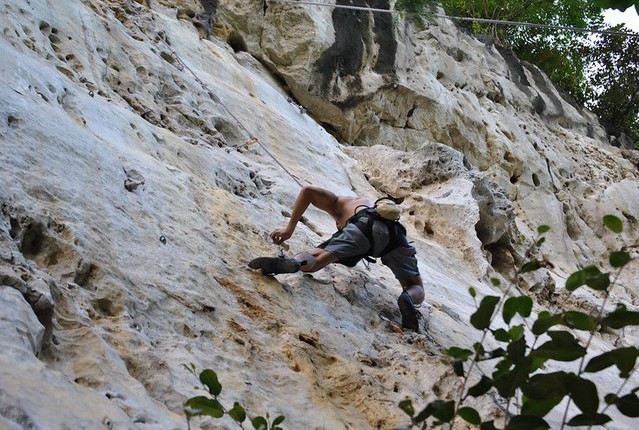
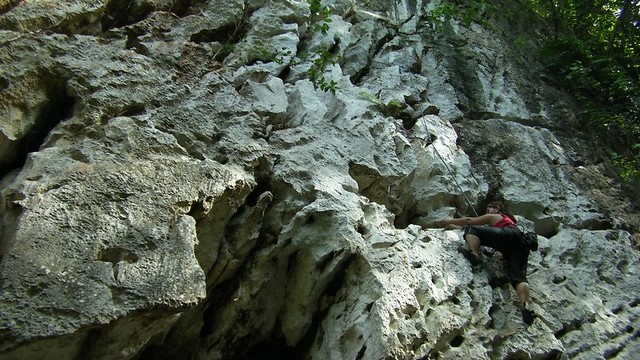

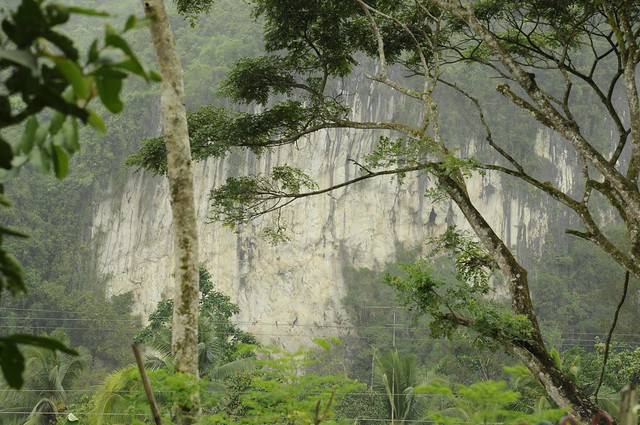
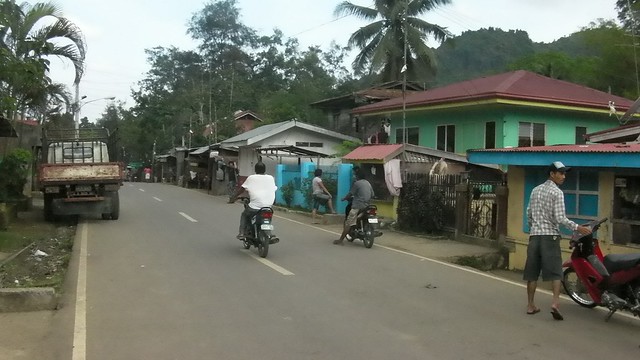


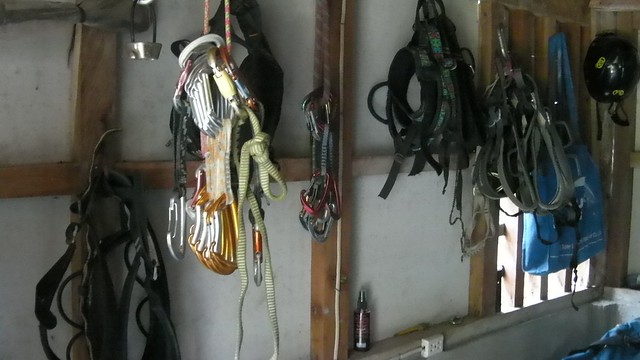
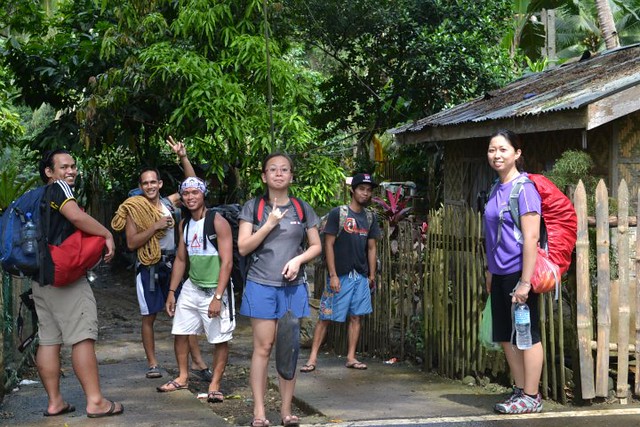
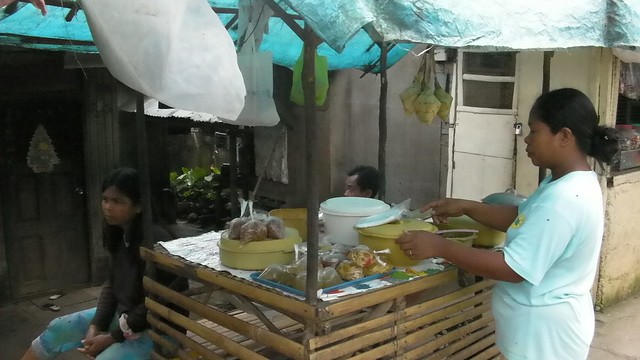
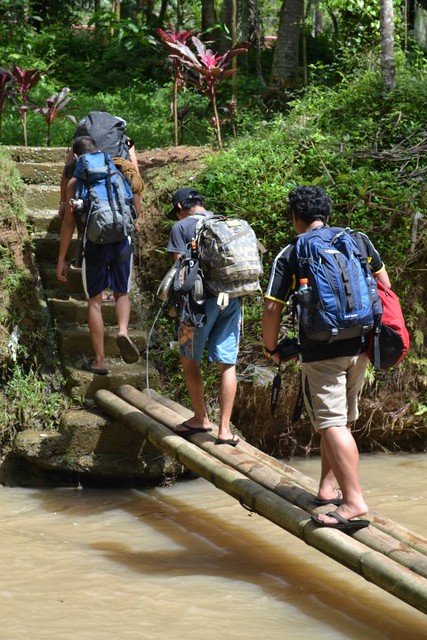


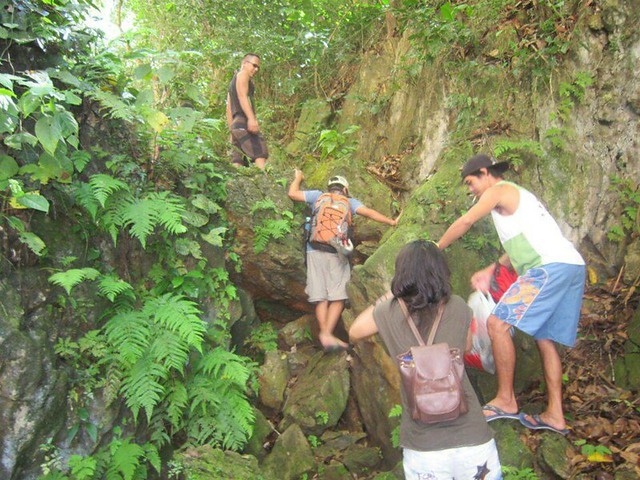

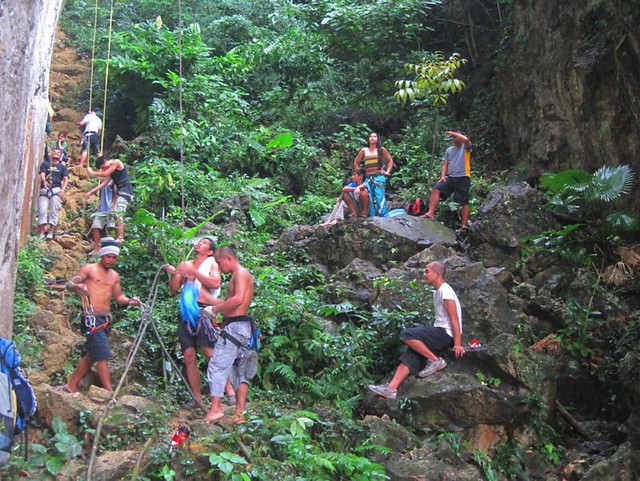
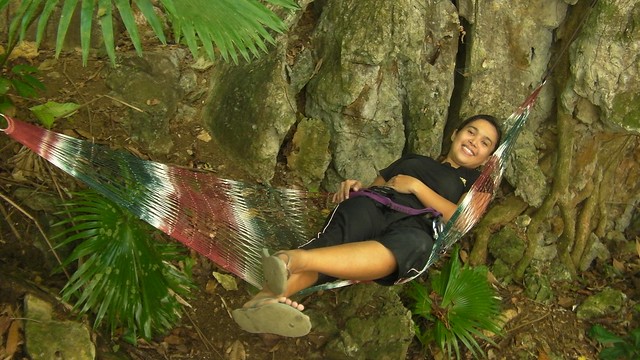
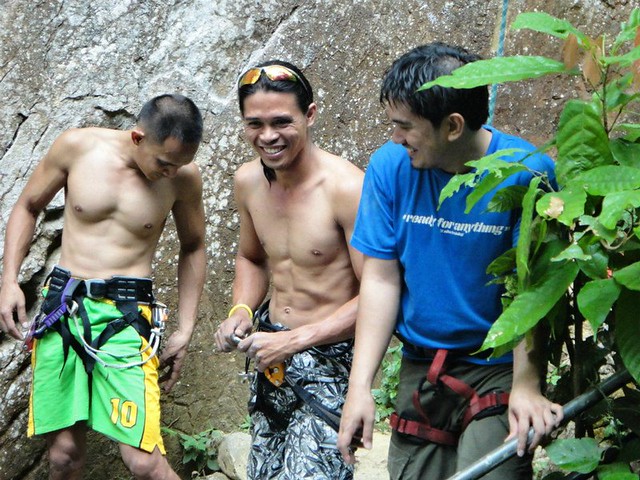
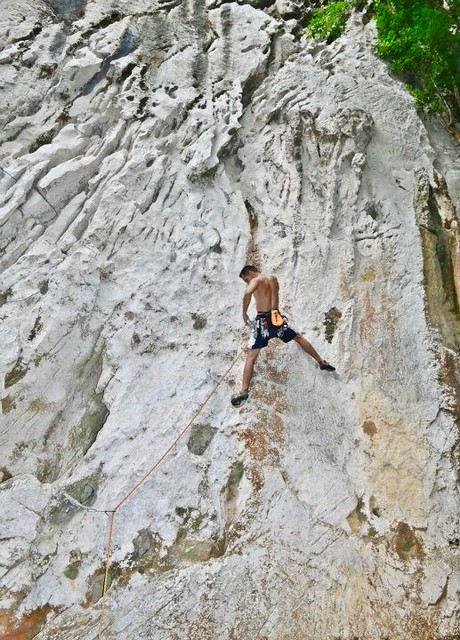
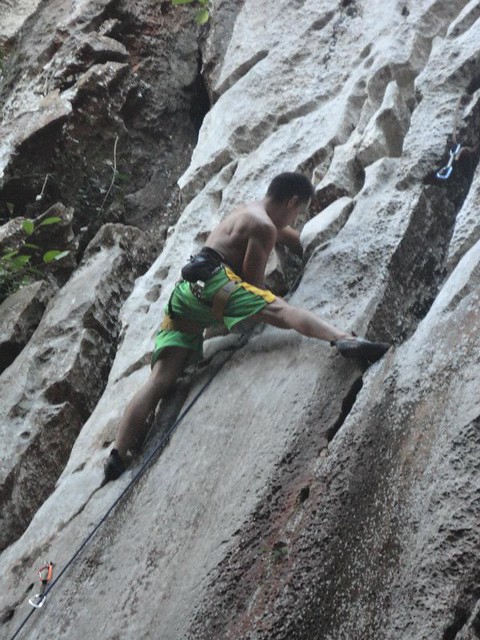






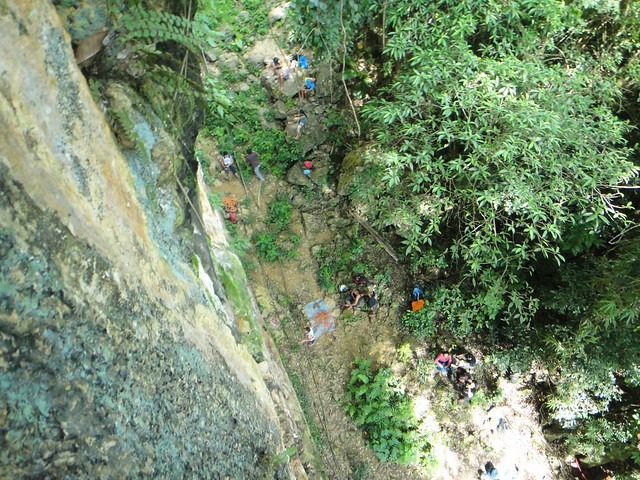


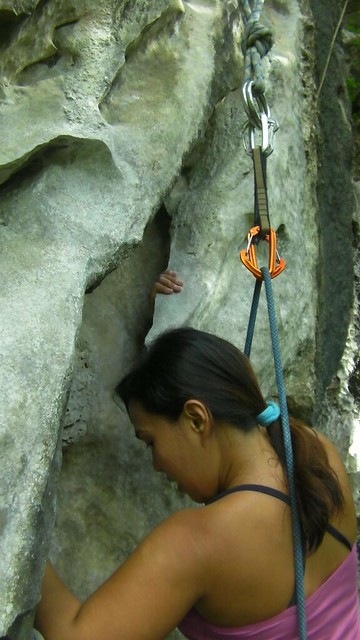

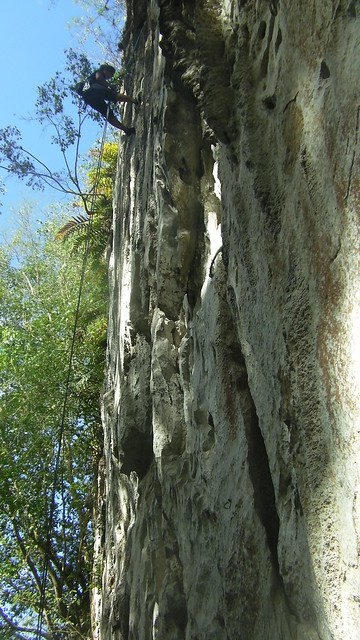

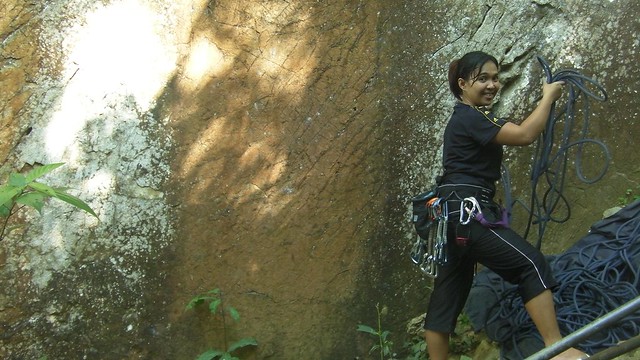
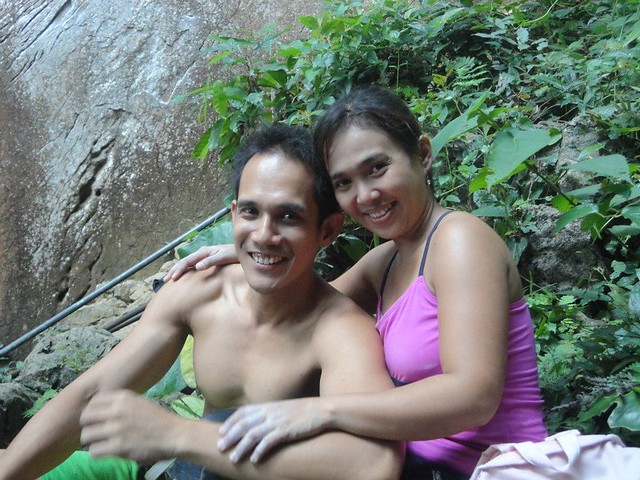
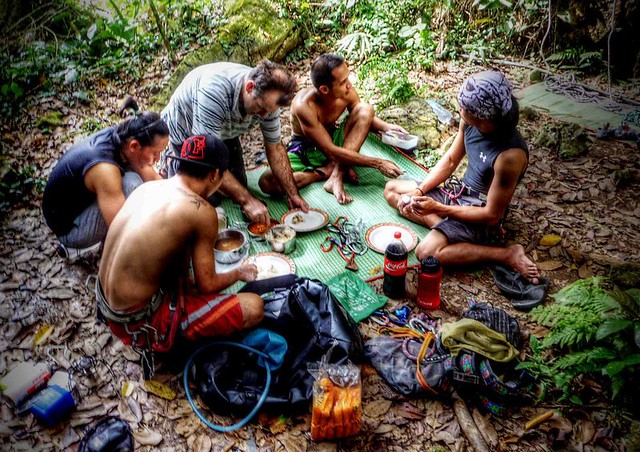



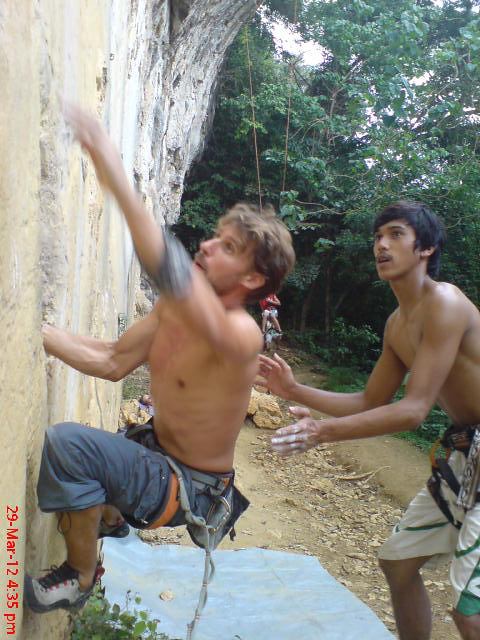
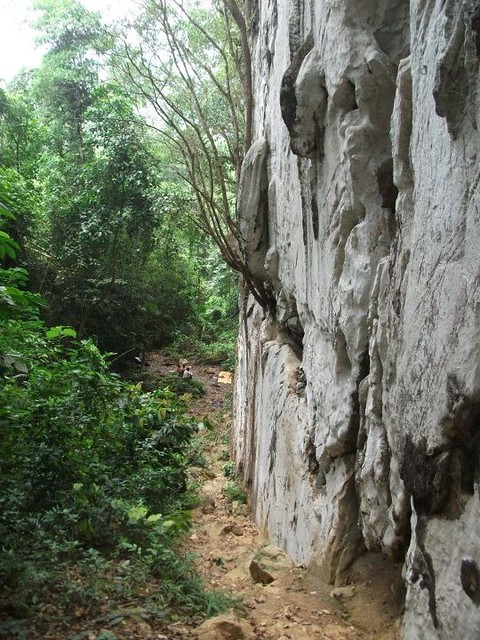
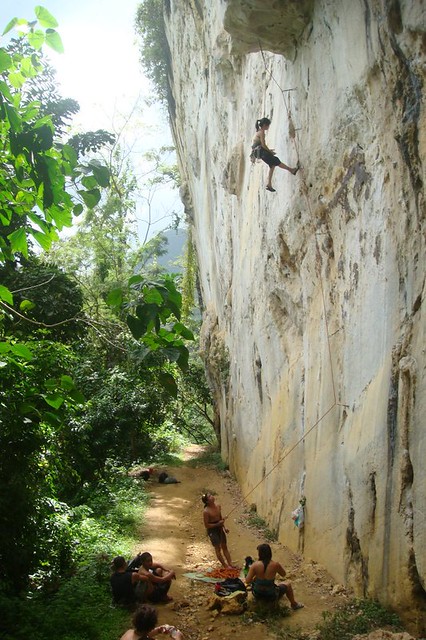
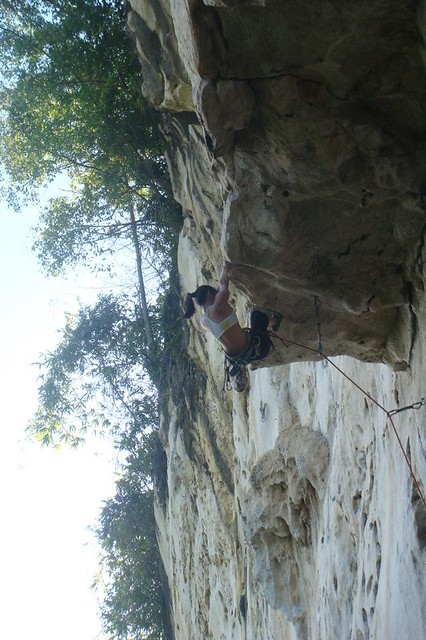

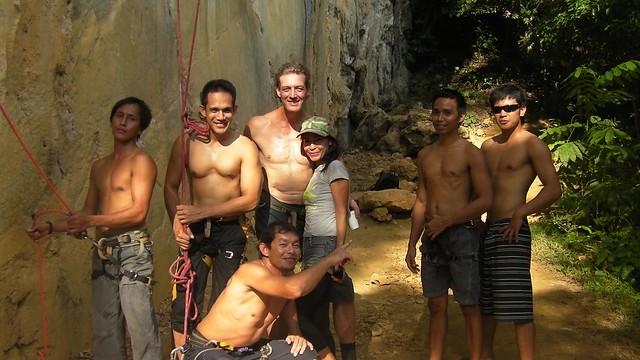

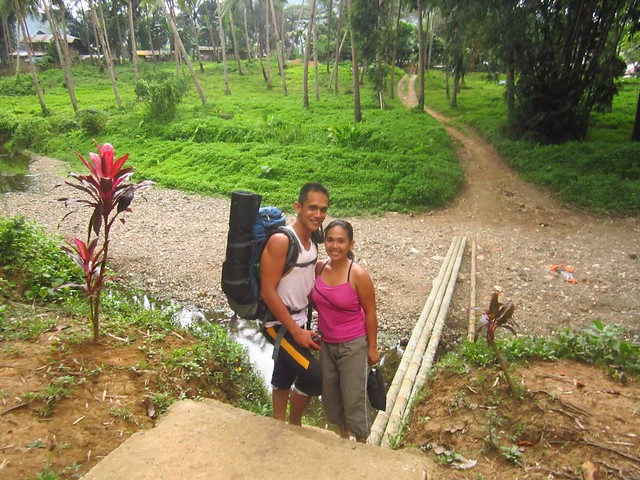

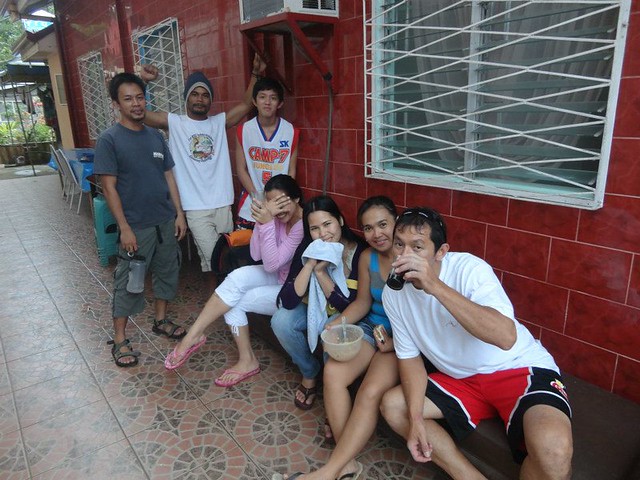

Where can I find a guided rock climbing tour for beginner/intermediate person?
Hi John,
You can get in touch with Enie, the local rock climbing guide there for beginner/intermediate lessons. His contact details are in this blog. 🙂 Thank you!
[…] for my first opportunity to climb white, limestone rock in Cebu and realising I absolutely love it! You know what else I love? CRACKS! I love climbing cracks. […]
[…] to Cebu-based mountaineer Gian Jubela of the adventure blog Adrenaline Romance, Cantabaco in Toledo City in Cebu is one of the country’s premiere climbing destinations, considered to be the mecca of […]
[…] that don’t require you to join a large group. This is your chance to explore new things! Rock climbing, trekking with just a couple of friends, caving, visiting less popular attractions, whitewater […]
[…] that don’t require you to join a large group. This is your chance to explore new things! Rock climbing, trekking with just a couple of friends, caving, visiting less popular attractions, whitewater […]
[…] that don’t require you to join a large group. This is your chance to explore new things! Rock climbing, trekking with just a couple of friends, caving, visiting less popular attractions, whitewater […]
[…] The charm of Cantabaco is the long span of different climbing routes available in this crag. Over the years, a number of loyal patrons have supported the crag’s development by funding bolts 2 for climbers to easily attach their locker draws 3. There is a Guidebook to Rock Climbing in Cebu available with proceeds that go to the crag improvements across the entire Cebu island. The bolting project at Cantabaco began around from 2008 to pave way for 35 metre long pitches with seasonal developments that continue to this day (the Crag, n.d., Gian and Sheila 2012). […]